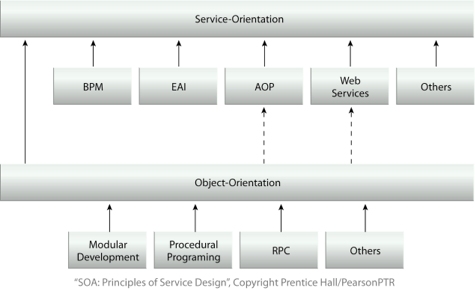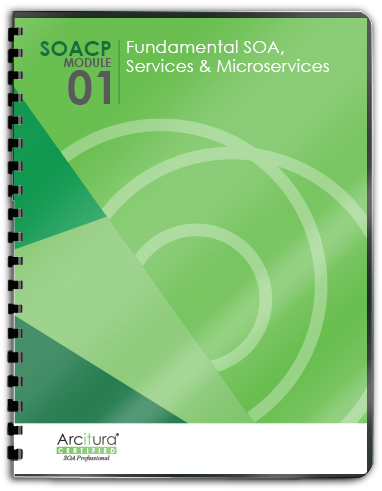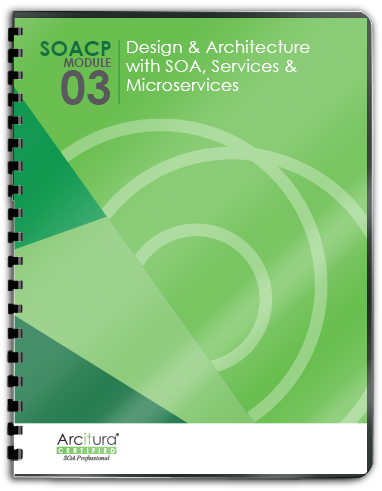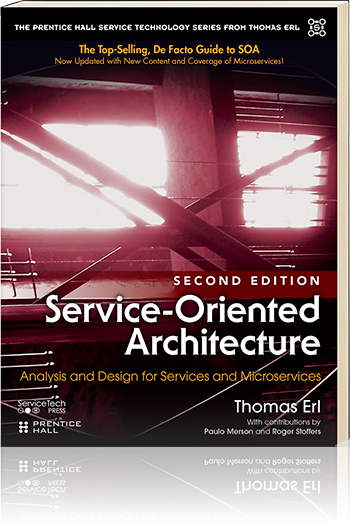SOA Patterns > Basics > Service-Orientation Principles > Introduction to Service-Orientation > Origins and Influences of Service-Orientation
Origins and Influences of Service-Orientation
It is often said that the best way to understand something is to gain knowledge of its history. Service-orientation, by no means, is a design paradigm that just came out of nowhere. It is very much a representation of the evolution of IT and therefore has many roots in past paradigms and technologies. At the same time, it is still in a state of evolution itself and thereby still subject to influences from on-going trends and movements.

Figure 1 – By tracing the primary influences of service-orientation several of its roots can be identified.
The sections that follow describe some of the more prominent origins and thereby help clarify how service-orientation can relate to and even help further some of the goals from past paradigms.
Object-Orientation
In the 1990s the IT community embraced a design philosophy that would lead the way in defining how distributed solutions were to be built. This paradigm was object-orientation, and it came with its own set of principles, the application of which helped ensure consistency across numerous environments. These principles defined a specific type of relationship between units of solution logic classified as objects, which resulted in a predictable set of dynamics that ran through entire solutions.
Service-orientation is frequently compared to object-orientation, and rightly so. The principles and patterns behind object-oriented analysis and design represent one of the most significant sources of inspiration for this paradigm.
In fact, a subset of service-orientation principles (service reusability, service abstraction, and service composability, for example) can be directly traced back to their object-oriented counterparts. What distinguishes service-orientation, though, are the parts of the object-oriented school of thought that were left out and the other principles that were added. See Chapter 14 in SOA: Principles of Service Design for a comparative analysis of concepts and principles associated with these two design approaches.
Service Technology
Even though service-orientation as a paradigm and SOA as a technology architecture are each implementation-neutral, their association with service technology has become commonplace – so much so that the primary SOA vendors have shaped their respective platforms around the utilization of service technology technology.
Although service-orientation remains a fully abstract paradigm, it is one that has historically been influenced by the SOA platforms and roadmaps produced by these vendors. As a result, the service technology framework has inspired and promoted several service-orientation principles, including Service Abstraction, Service Loose Coupling, and Service Composability.
Business Process Management (BPM)
BPM places a significant emphasis on business processes within the enterprise both in terms of streamlining process logic to improve efficiency and also to establish processes that are adaptable and extensible so that they can be augmented in response to business change.
The business process layer represents a core part of any service-oriented architecture. From a composition perspective, it usually assumes the role of the parent service composition controller. The advent of orchestration technology reaffirmed this role from an implementation perspective.
A primary goal of service-orientation is to establish a highly agile automation environment fully capable of adapting to change. This goal can be realized by abstracting business process logic into its own layer, thereby alleviating other services from having to repeatedly embed process logic.
While service-orientation itself is not as concerned with business process reengineering, it fully supports process optimization as a primary source of change for which services can be recomposed.
Enterprise Application Integration (EAI)
Integration became a primary focal point in the late 90’s, and many organizations were ill prepared for it. Numerous systems were built with little thought given to how data could be shared outside of the system boundary. As a result, point-to-point integration channels were often created when data sharing requirements emerged. This led to well known problems associated with a lack of stability, extensibility, and inadequate interoperability frameworks.
EAI platforms introduced middleware that allowed for the abstraction of proprietary applications through the use of adapters, brokers, and orchestration engines. The resulting integration architectures were, in fact, more robust and extensible. However, they also became notorious for being overwhelmingly complex and expensive, as well as requiring long-term commitments to the middleware vendor’s platform and roadmap.
The advent of the open service technology framework and its ability to fully abstract proprietary technology changed the face of integration middleware. Vendor ties could be broken by investing in mobile services as opposed to proprietary platforms, and organizations gained more control over the evolution of their integration architectures.
Several innovations that became popularized during the EAI era were recognized as being useful to the overall goals associated with building SOA using service technology. One example is the broker component, which allows for services using different schemas representing the same type of data to still communicate through runtime transformation. The other is the orchestration engine, which can actually be positioned to represent an entire service layer within larger SOA implementations. These parts of the EAI platform support several service-orientation principles, including Service Abstraction, Service Statelessness, Service Loose Coupling, and Service Composability.
Aspect-Oriented Programming (AOP)
A primary goal of AOP is to approach the separation of concerns with the intent of identifying specific concerns that are common to multiple applications or automation scenarios. These concerns are then classified as “cross-cutting,” and the corresponding solution logic developed for cross-cutting concerns becomes naturally reusable.
Aspect-orientation emerged from object-orientation by building on the original goals of establishing reusable objects. Although not a primary influential factor of service-orientation, AOP does demonstrate a common goal in emphasizing the importance of investing in units of solution logic that are agnostic to business processes and applications and therefore highly reusable. It further promotes role-based development, allowing developers with different areas of expertise to collaborate.


